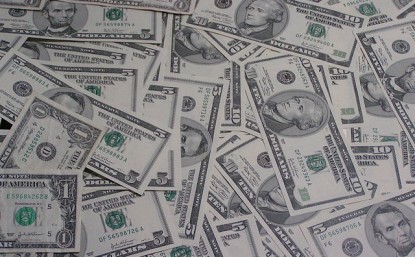
The U.S. dollar is currently at a five-year high against other major currencies. Meanwhile, the roughly $1,200 per ounce price of gold is one-third of what it was in 2011. Even as things that normally cause the price of gold to rise are occurring, due to the strength of the dollar they seem to be having little effect on U.S. gold markets. Factors like loose monetary policy, high rates of currency printing, 0% short and long-term interest rates, rising debt and debt ratios in the public and private sectors are not raising the price of gold as in years past.
The main factors that affect gold prices in the short term are inflation expectations, interest rates, liquidity, and the U.S. dollar. When it comes down to it, the strength of the U.S. dollar is the factor that is currently having the greatest effect on the price of gold. There are several other forces putting downward pressure on the price of gold, including the expectation that the U.S. Federal Reserve will soon begin raising interest rates. Most estimates are forecasting this to begin occurring in June. This is keeping gold prices low because higher interest rates increase the cost of holding assets that don’t bear interest. In turn, low interest rates cut the opportunity cost of holding gold.
Some analysts are warning that if the price of gold doesn’t rise soon, gold production will fall dramatically, perhaps to levels not seen in over half a century. While investor demand for gold remains low, and most analysts predict this will continue, some others are forecasting an improved climate for gold, and perhaps an end to the bear market in early 2016.
Countries like Russia have tripled their gold holdings since 2005, though this is mostly due to political reasons and their avoiding the U.S. dollar. India, the world’s largest gold consumers, removed import restrictions last year, and are continuing to buy up gold in droves, mostly in the retail sector.
Stock traders have been wary of gold as an investment for a while, in part because the bear market gold has been experiencing has been longer than average. Commodity traders are now closely watching the price of gold and the strength of the U.S. dollar. Kavan Klein is the founder of Trade with Kavan, an interactive stock trading platform. Besides advising his Trade with Kavan members on how to successfully trade stocks, he is also an investor who recommends keeping an eye on gold. “Along with the strength of the dollar, I’ll be watching the price of gold closely throughout the year, especially during the fourth quarter,” Klein comments, “and in 2016 I’ll hope to be getting back into supporting gold.”
Economic forecasts seem to support his position, as analysts are predicting that the strong U.S. dollar will cause U.S. economic growth to slow. Klein explains that, since gold as an investment is a hedge against economic weakness, it is expected that increased interest in gold will serve to drive the price up in the coming year or two.
The strong dollar makes U.S. goods more expensive relative to other goods, and because the dollar is so strong right now compared to weaker currencies, multinational companies based out of the U.S. are essentially selling their goods at a discount overseas. Goldman Sachs is recommending traders focus on U.S. stocks with high proportions of domestic sales, as multinational conglomerates like McDonald’s and Coca-Cola have been negatively affected by the strength of the dollar. The euro is expected to drop even further over the next year or two, which doesn’t improve the outlook for multinationals, and means the dollar could stay relatively strong.

As Trade with Kavan’s Kavan Klein adds, since gold and other precious metals are trading at bear market levels, they do offer a great opportunity for investors who have patience and are looking for long-term investments. Because gold prices are measured in U.S. dollars, the price of gold rises as the strength of the dollar falls, and vice versa. Kavan recommends that investors looking for long-term gains buy up gold at the current bear market levels, but for those looking for shorter-term gains, stick to Goldman’s recommendation and focus on U.S. companies with mostly domestic sales.



 Follow us on Twitter
Follow us on Twitter Become our facebook fan
Become our facebook fan











Comments are closed.